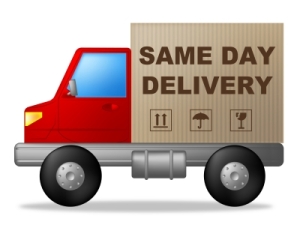Part two of a three-part series

Lisa Hoffman
Fundraising is fundraising, or is it? We asked Lisa Hoffman about her observations related to the similarities and differences between large, established nonprofits and emerging, or grassroots, organizations as it relates to fundraising.
“All nonprofits share a passion and commitment to create positive change in their community – local, regional, national, beyond. The vast majority of nonprofits are founded by a person or a group so driven by a cause that they decide to start an organization. I would say that even the largest nonprofit institutions started literally or figuratively around someone’s kitchen table,” Hoffman began.
“Beyond that, the differences lie in resources and what resources can create. Large, established nonprofits usually are adequately or well resourced. Emerging nonprofits need to figure out their business models and make them work. Some grassroots organizations have accomplished this, and many struggle, for a variety of reasons.
“Any size nonprofit can have strong and engaged leadership, a clear and compelling vision, and a board and organizational culture of positive relationships, commitment and accountability, which combined yield an effective team and organization.
“Similarly, any size nonprofit can build an effective and vibrant fund development effort – it comes back to leadership, culture, and putting fundraising success factors into place. I’ve worked with a number of groups over the years that started with no money or a few hundred dollars and are today established groups with budgets ranging from $1 million-$5 million or more.”
Read Part One: 3 Tips to Achieving Fundraising Sucess
We believe that “mindfulness” impacts much of life, including fundraising. As an ordained Zen priest Hoffman has wisdom to share in this area as well. “Mindfulness – awareness of what is happening in this moment – can have a powerful impact because it encourages organizations and their leadership to look beyond their nonprofits needs and situation to the larger community, and especially donors,” she began. “Many organizations are too internally focused and don’t look at the bigger picture beyond their mission. As our colleague Kay Sprinkel Grace says, ‘People give because you meet needs, not because you have needs.’ Mindfulness can help nonprofits keep this in mind in inviting people to partner with financial support.
“Mindfulness is also a wonderful skill for board and staff to develop in cultivating and asking people to invest in their organizations. It’s easy to be so concerned or so anxious about asking for the gift that we don’t take in signals that a person isn’t ready, or that the initiative we are pushing is not what speaks to their heart and mind.”
“And, on an individual level, mindfulness can help us notice how we’re feeling and what we need for personal sustainability – so that we can keep doing the work that is so important for many years.”
You can reach Lisa at www.lisahoffman.net
Mel and Pearl Shaw are the authors of “Prerequisites for Fundraising Success” and “The Fundraiser’s Guide to Soliciting Gifts.” They provide fundraising counsel to nonprofits. Visit them at http://www.saadandshaw.com. Follow them on Twitter: @saadshaw.
 FUNdraising Good Times continues to focus on The People, Strategies & Information That Make Fundraising Come Alive! With our continued focus on helping you and your organization reach its full FUNdraising potential, we understand the need for growth and a streamlined process.
FUNdraising Good Times continues to focus on The People, Strategies & Information That Make Fundraising Come Alive! With our continued focus on helping you and your organization reach its full FUNdraising potential, we understand the need for growth and a streamlined process.










